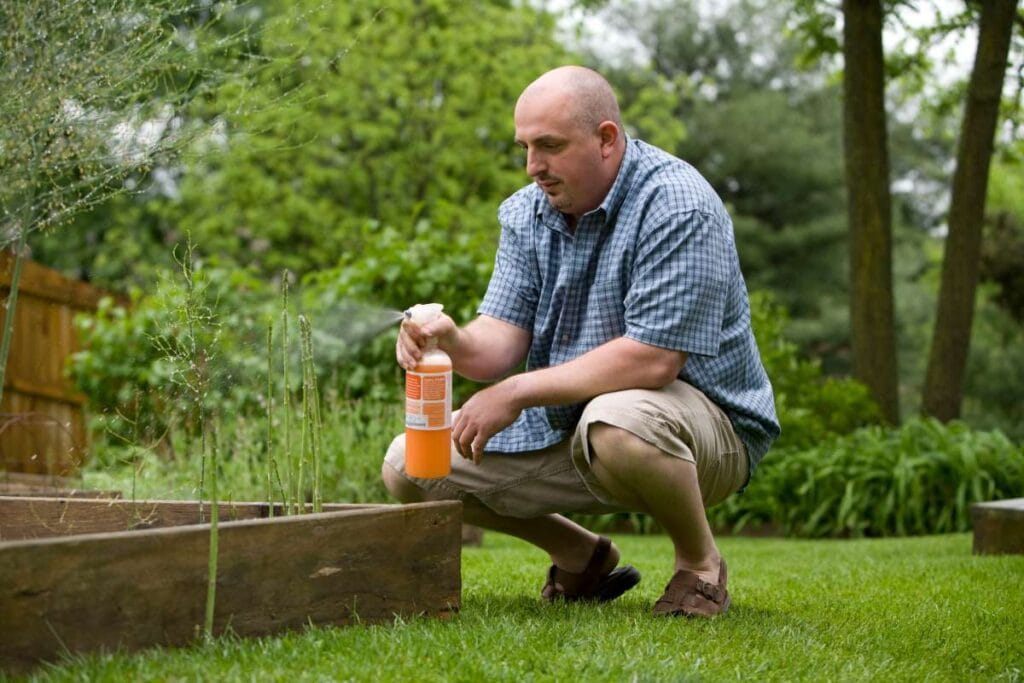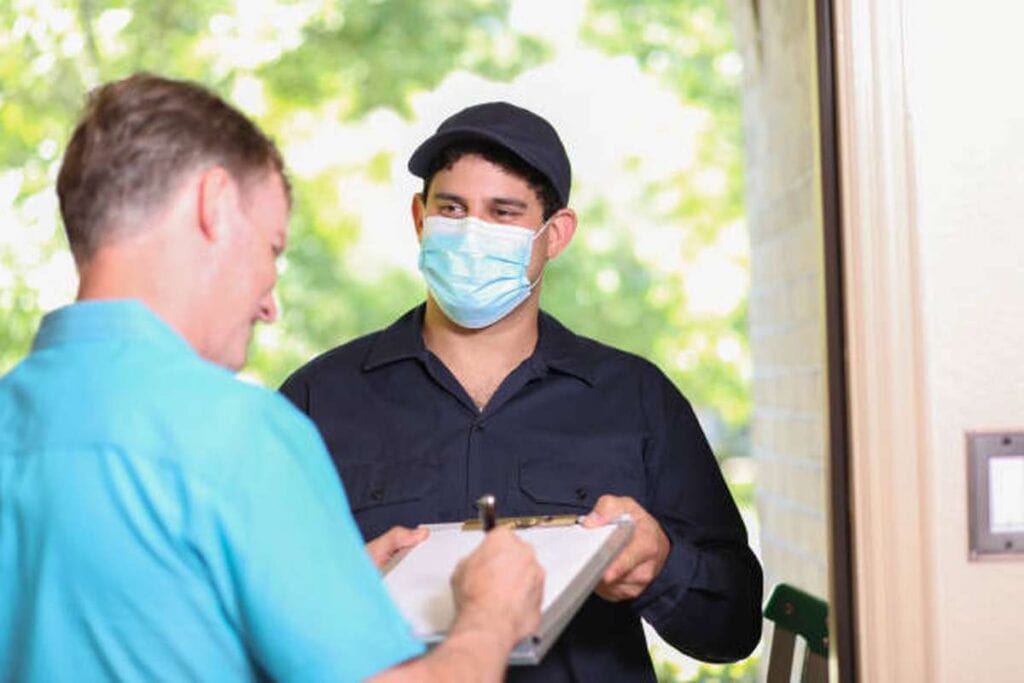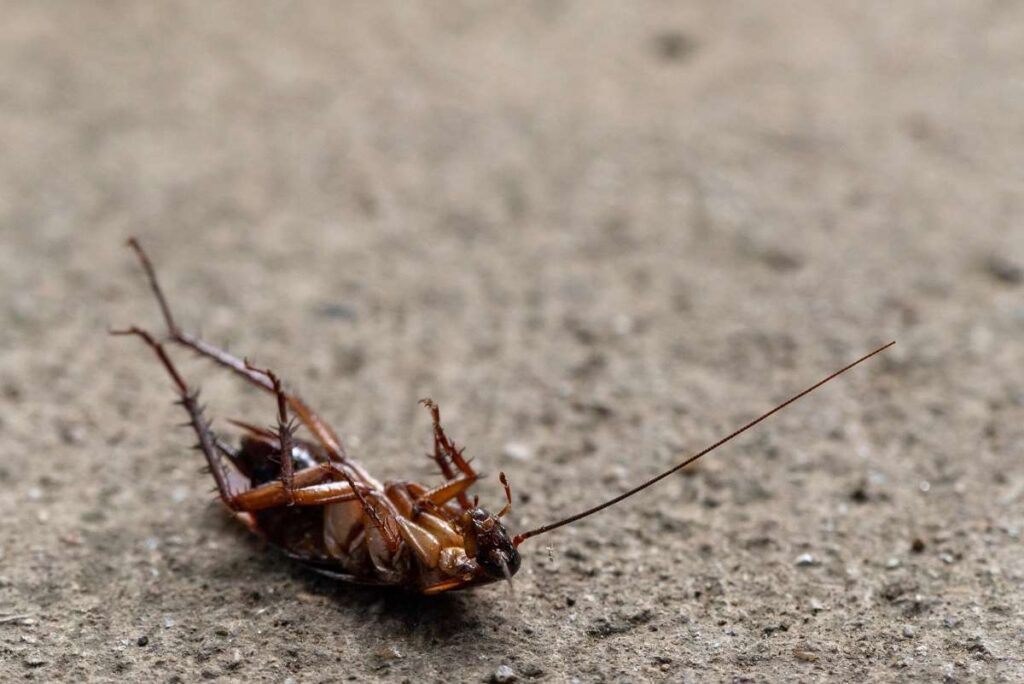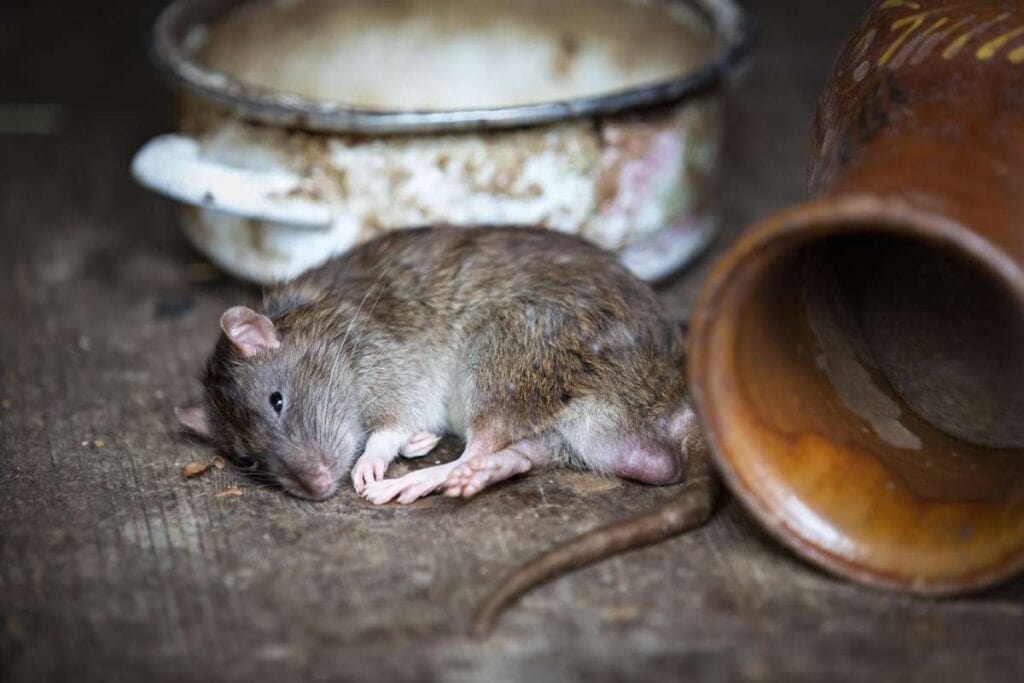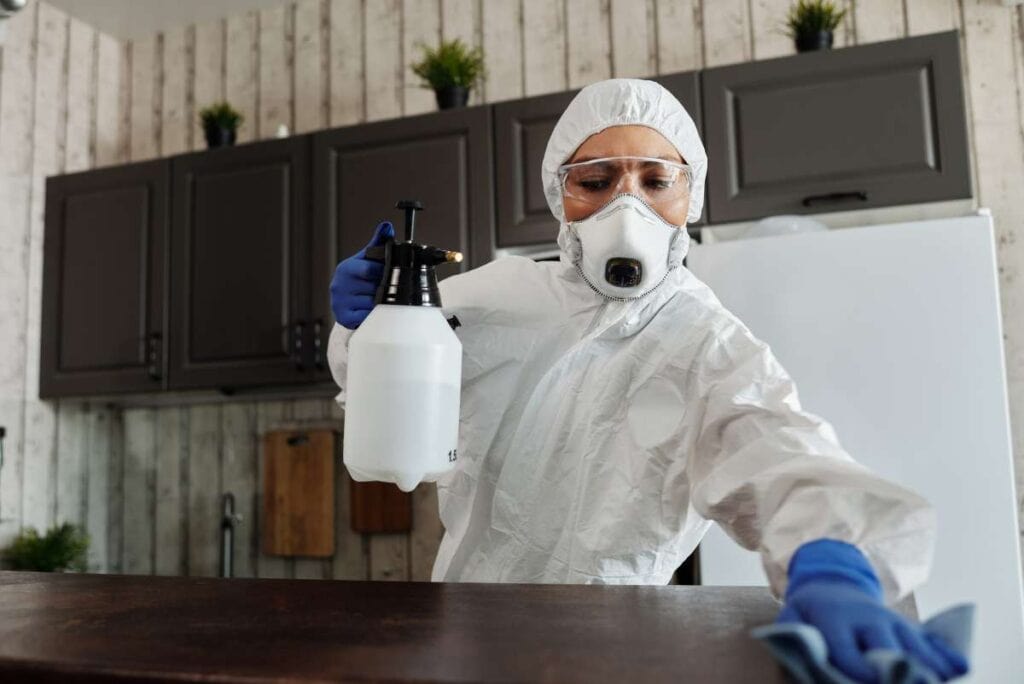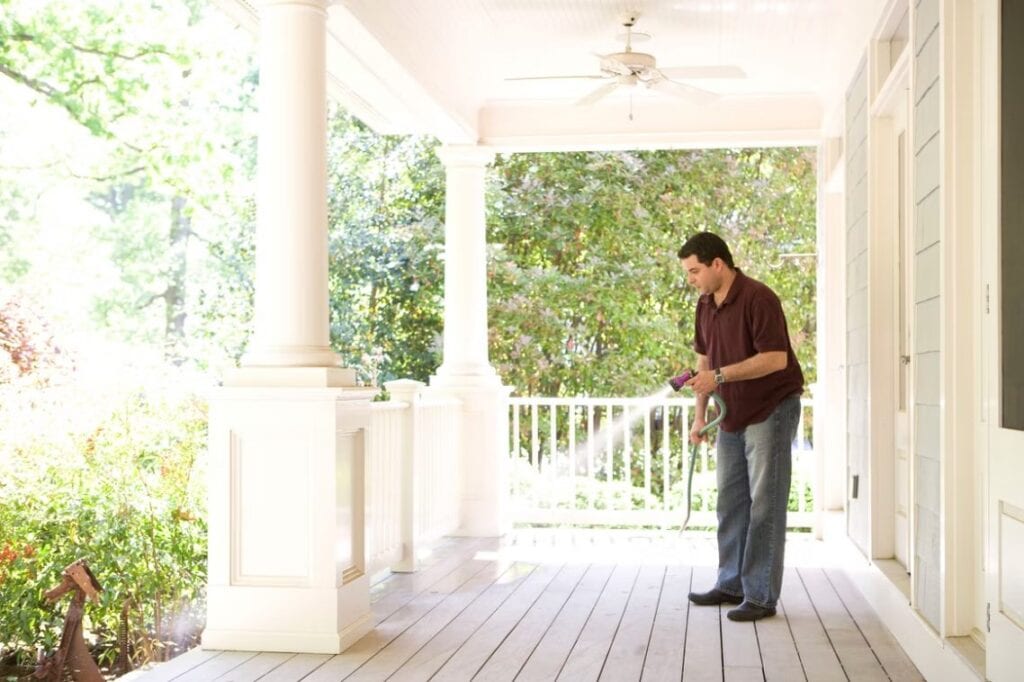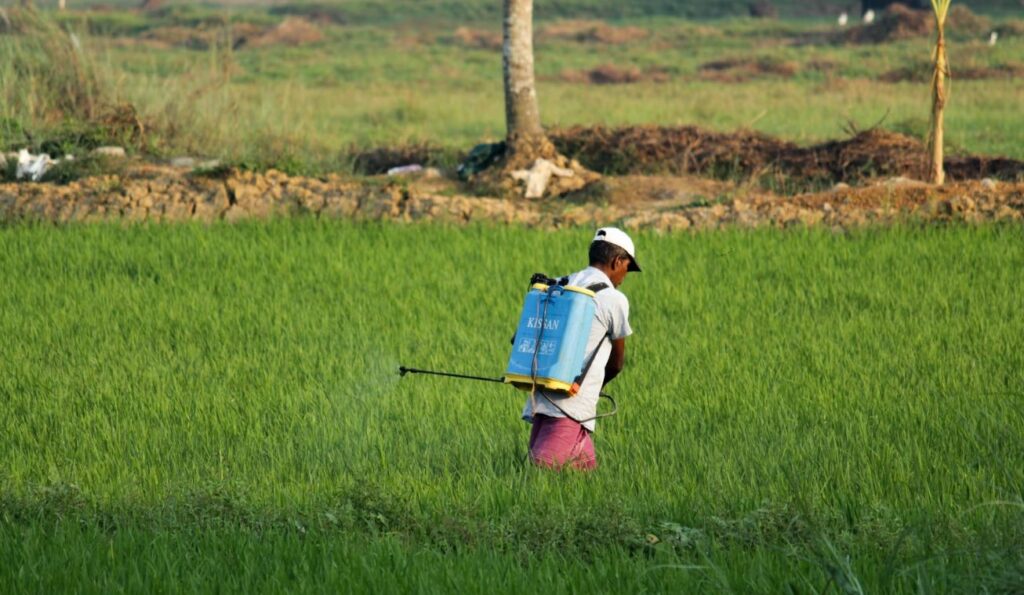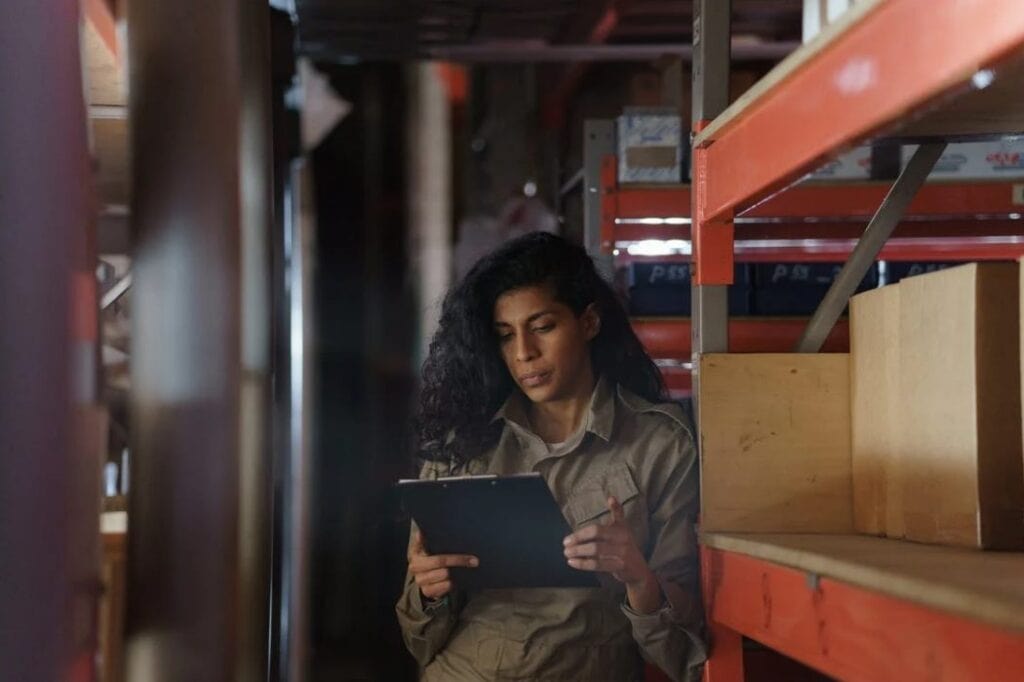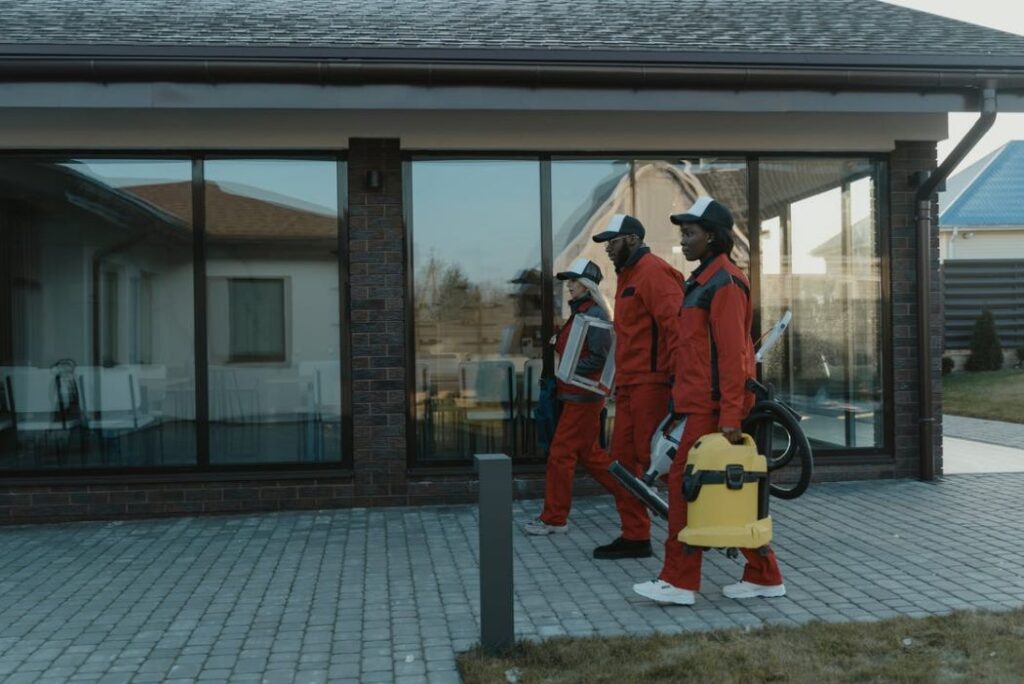No one likes having unwanted guests in their home. If you've been fighting off a swarm of roaches, a colony of termites, a swarm of bedbugs, or any other invasive insect, fumigation may be your best choice. The fundamentals of fumigation, such as how to conduct it properly and when to call in the pros, are discussed in detail below.
What is Fumigation?
The term "fumigation" refers to the process of using gaseous chemicals known as "fumigants" to smother and kill pests inside a building. Since it is an intrusive treatment that can take anything from a few hours to a week to complete, it is not typically used as the first line of defence. However, fumigation may be necessary to completely eradicate more tenacious bug populations.
Fumigation is sealing off a building with a huge tent or a set of tarps before releasing insecticides inside. This method ensures that the fumes spread throughout the house and suffocate any insects that may have taken up residence there. Depending on the severity of the infestation, your house could be locked off for several days. Following these steps will give the fumigant enough time to penetrate all crevices and nooks.
Food, drugs, and personal items that can't be taken with you should be double-bagged in the technician-provided plastic bags. Only items that come in their own factory-sealed packaging are exempt from the need for double packaging. You and your family, including any pets, will need to find temporary lodging. There are also houseplants that need to be taken out. Before you leave the house, make sure every door, cupboard, drawer, and appliance is open. Open the draperies and blinds.
The tenting materials will be removed after the extermination is complete so that your home can air out for several more days. As soon as the fumigants have already been distributed to a safe level, you may return to your home. Pesticides are dangerous to humans, animals, and the environment if inhaled excessively. When everything is said and done, you'll have the assurance of a pest-free home.
Comparison of Professional and Homemade Fumigation

The first thing you should do when trying to figure out how you will fumigate your house is to determine whether or not you can perform the task yourself, or whether you will need to employ professionals. Here are some things to think about.
The Severity of the Infestation
Do-it-yourself fumigation products may be adequate for treating localised and/or tiny infestations. On the other hand, if the infestation is widespread, you may need to set up tents and perform a more thorough fumigation operation, at which point it is probably best to contact a professional fumigation service.
Reasonable Pricing and Practicality
Fogger bombs, used in do-it-yourself pest management, release fumigants into the air. You can find them in hardware and home-improvement stores for a price range of $10 to $100, based on how much surface area you need to cover. The only catch is that you'll have to be away from home for a certain amount of time, even if you use them on your own time.
You should expect to pay upwards of $500 for the assistance of a professional fumigator, and you will need to make an appointment in advance and wait.
Safety
Misusing gaseous insecticides is a serious concern that can spread throughout your home. The health of the family, the pets, and any other surrounding people or animals is at risk if the fumigation procedure is carried out poorly. Before attempting a do-it-yourself fumigation, it's important to get a firm grasp on the procedure and the potential hazards involved. If you have any doubts about your ability to execute the job properly, it's best to bring in the pros.
Attempting to Handle Things Yourself? Discover the Basics of DIY Fumigation Here
If you've done your homework on fumigators and are confident in your ability to handle the job on your own, the instructions below will walk you through using commercially available fumigators to get rid of pests.
Pick a fumigation solution
Insect and rodent fogger bombs come in many forms. Pick the one that's right for the amount of space you're trying to treat and the pests you're trying to get rid of. Budget should be taken into account; however, it is vital to realise that cheaper may not necessarily be better in this case, as cutting costs on cheap home disinfection solutions might mean paying more afterwards when they don't function.
Plan ahead
Do-it-yourself fumigation isn't something you can do whenever you're bored. For a few hours, you'll have to pack up your dogs and leave the house. Likewise, glassware, cutlery, and any edible plants (like those in a windowbox garden) should not come into contact with fumigants. For the latter, put them somewhere the gases can't reach, and thereafter give them a good scrub to be safe. Turn off air pumps and cover aquariums with plastic to get them ready for the move.
Get your house ready for the fumigation
When using the fogger bombs you bought, make sure you strictly adhere to the included instructions. You shouldn't store these items in closed spaces like cabinets or drawers, but if you absolutely have to, leave the doors open. You should lock any windows and doors leading outside, turn off the air conditioner and heater, and temporarily turn off the smoke detectors in your home.
Set your foggers
To reiterate, read and observe all product labels carefully. The majority of fogger bombs are meant to be set on furniture like chairs or tables. Before you set them off, make sure everything is ready and that everyone and everything is out of the house, including pets. After placing all of the fogger bombs wherever you want them to go, detonate them all at once and quickly leave the house while the door is locked behind you. Put on a mask to protect your lungs from the gaseous substances being released by the bombs.
Just give it some time
The instructions on the disinfection product packaging should be followed to the letter. The longer you could give the product to sit, the better, both for your personal safety and for the effectiveness of the product. After the timer goes off, head back inside while wearing your mask. When you get there, you can throw away the foggers and start airing out the room by opening the windows and doors. Get out of the house and give the interior a couple hours to air out before coming back in.
Fumigation Prep for Cracker, Bedbug, Flee, and Other Pests
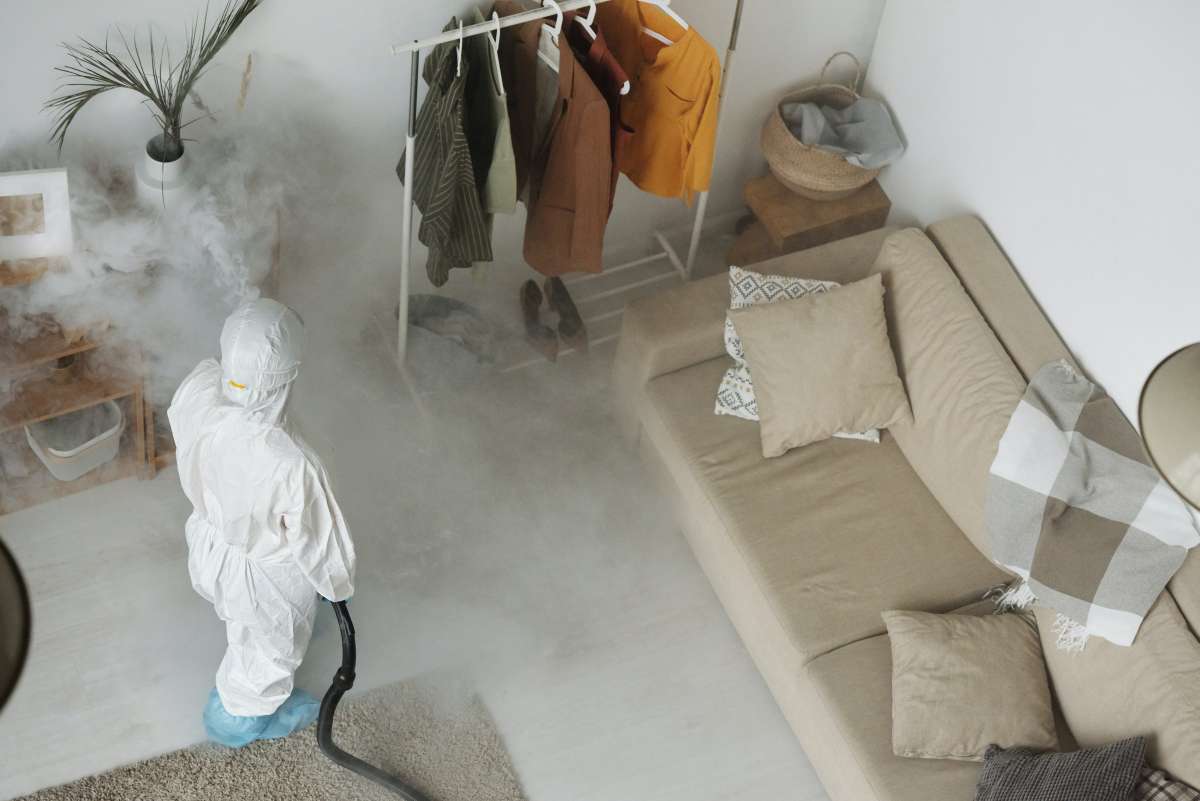
If your house has been infested by insects or rodents, you may get rid of them once and for all by calling a pest control company agency to fumigate the premises. The exterminator service will give you detailed instructions and provide any help you need before the fumigation. Steps to take in preparation for fumigation include removing pets and any other essentials that could be destroyed by the process.
After a fumigation, what should be done?
Staying away from the fumigated home or area while it is still sealed is a necessary safety precaution to take during the fumigation process. If you've been outside, please wait for the place to be cleaned and ventilated before returning inside. If you need fumigation services because of a pest infestation in your home or business, you've come to the right place. We have highly trained professionals who can fumigate the contaminated area and eradicate all bugs, rats, and other pests.
The Benefits of Fumigation
Only professionally certified fumigators should use this equipment.
There are a variety of uses for fumigation, including:
- Quickly removing pests like insects and rodents from goods and buildings.
- Go inside small spaces that sprays and dust may not be able to reach, such as crevices and openings in packaging.
- If the area is ventilated adequately, they won't leave behind anything unpleasant to look at, smell bad, or pose a safety risk.
The ideal fumigant wouldn't have any discernible effect on the treated good, and it wouldn't leave behind any residue that might be detrimental either during processing or to the end user.
Tolerance level refers to the maximum allowable concentration of pesticide residue in or on agricultural goods following treatment and ventilation. Keep fumigant residues below the maximum amounts specified on the label at all times by doing so.
Disadvantages of Fumigation
Fumigants:
- are extremely hazardous to the health of any human beings who come into contact with them. Some fumigants are dangerous if even a little amount is breathed in. Rapid action must be taken in the event of an emergency, such as a leak, spill, or broken piece of machinery.
- require unique safety gear like gas monitors and SCBAs.
- need regions to be hermetically sealed. Fumigant concentrations can decline below deadly levels even before required exposure time elapses if leaks occur.
- some items are flammable or highly corrosive.
- frequently need to be heated to be effective. During the colder months, this may become an issue.
The process of fumigation is both labor-intensive and pricey. More effort is required compared to standard pest control procedures. Tenants/occupants must vacate the building during structural fumigation, which is inconvenient. Because of the unique risks and circumstances associated with fumigation, the practise is highly regulated by law.
Considerations for Safety
Because of their severe acute toxicity, particularly by inhalation, fumigants fall under the category of Restricted-Use pesticides. Skull and crossbones plus the words "danger" and "poison" are Toxic Category I signal words. Instructions for use, safekeeping, and the disposal services of leftovers and empty containers are included on their respective labels. Information on how to treat an exposure and how to administer an antidote is included on the labels.
Application methods, safety gear, first aid, and disposal protocols must all be well understood by anyone who works with fumigants. When working with fumigants, at least two individuals are required, each of whom must wear protective masks and gloves.
The capacity (in cubic feet) of a structure, vacuum chamber, railcar, or tarpaulin-covered shipment of goods determines how much fumigant must be used. The majority of the time, the area taken up by the product is not considered. Fumigants are applied in accordance with the directions on their labels.
Qualities to Look for in a Fumigant
- If you could describe the item's volatility and ability to penetrate the market, what would you say?
- Is there a risk of explosion, fire, or corrosion from using this product?
- What kind of early warning systems does it have, and how does it find things?
- Is there a risk that seed viability or product quality could be affected?
- When anything decomposes, how long does it take, and what remains, if anything?
- How do you handle used items and empty containers?
- Is there a way to anticipate how weather patterns can change the operation?
Alternative Methods for Preventing Pest Infestations
Pest-proofing your home does not require the use of dangerous pesticides. If you follow these suggestions, you can keep your home free of pests and worry.
- Maintain a clean home. Make it a habit to regularly clean, mop, and vacuum the floors and furnishings.
- Declutter your space. Most pests prefer to take refuge in disorganised spaces.
- Make sure your trash can is covered. Garbage should be disposed of on a regular basis in an orderly fashion.
- Look for openings around the house that could let in pests. Seal them off with caulk once you've located them. Mice can squeeze through openings as small as a cent. A cockroach, on the other side, can squeeze through a gap no wider than a credit card.
- Store food in airtight containers.
- Mend dripping faucets and pipes.
- To prevent bugs from entering your home, screen them in. You should always lock your doors, or at least use a screen door.
- In no circumstances should you ever let dirty dishes sit in the sink overnight. Pests like rodents and insects will be drawn to this.
- Clean up the dropped food and drinks.
If you follow these guidelines, you'll considerably lessen the possibility that pests may invade your home. On the other hand, if you're already dealing with an infestation, it's probably best to call in the experts.
Conclusion
Fumigation involves enclosing a structure in a large tent or tarps and then spraying insecticides inside. In this way, the gases will be dispersed throughout the home and the pests will be suffocated. Your home may have to be sealed off for many days if the infestation is bad enough. Exposure to high levels of pesticides in the air is bad for people, animals, and the planet. In the case of small or localised infestations, homemade remedies could be sufficient, but for larger problems, professional fumigation is likely to be the most effective option.
There is a wide variety of insect and rodent fogger bombs available. Choose the most appropriate one for your pest control needs and the area you intend to treat. While it's important to stay within your financial means, keep in mind that skimping now could end up costing you more in the long run if something breaks. Be sure to read and follow all directions on packaged goods.
Content Summary
- No one likes having unwanted guests in their home.
- If you've been fighting off a swarm of roaches, a colony of termites, a swarm of bedbugs, or any other invasive insect, fumigation may be your best choice.
- The fundamentals of fumigation, such as how to conduct it properly and when to call in the pros, are discussed in detail below.
- The term "fumigation" refers to the process of using gaseous chemicals known as "fumigants" to smother and kill pests inside a building.
- Since it is an intrusive treatment that can take anything from a few hours to a week to complete, it is not typically used as the first line of defence.
- Fumigation is sealing off a building with a huge tent or a set of tarps before releasing insecticides inside.
- Depending on the severity of the infestation, your house could be locked off for several days.
- You and your family, including any pets, will need to find temporary lodging.
- There are also houseplants that need to be taken out.
- Open the draperies and blinds.
- The tenting materials will be removed after the extermination is complete so that your home can air out for several more days.
- As soon as the fumigants have already been distributed to a safe level, you may return to your home.
- When everything is said and done, you'll have the assurance of a pest-free home.
- The first thing you should do when trying to figure out how you will fumigate your house is to determine whether or not you can perform the task yourself, or whether you will need to employ professionals.
- Do-it-yourself fumigation products may be adequate for treating localised and/or tiny infestations.
- On the other hand, if the infestation is widespread, you may need to set up tents and perform a more thorough fumigation operation, at which point it is probably best to contact a professional fumigation service.
- Fogger bombs, used in do-it-yourself pest management, release fumigants into the air.
- Misusing gaseous insecticides is a serious concern that can spread throughout your home.
- Before attempting a do-it-yourself fumigation, it's important to get a firm grasp on the procedure and the potential hazards involved.
- If you've done your homework on fumigators and are confident in your ability to handle the job on your own, the instructions below will walk you through using commercially available fumigators to get rid of pests.
- Pick a fumigation solution Insect and rodent fogger bombs come in many forms.
- Pick the one that's right for the amount of space you're trying to treat and the pests you're trying to get rid of.
- Do-it-yourself fumigation isn't something you can do whenever you're bored.
- Get your house ready for the fumigation When using the fogger bombs you bought, make sure you strictly adhere to the included instructions.
FAQS About Fumigation
Do not forget any details or nooks and crannies. Dust and fumigants can be easily removed from household surfaces by wiping them down with a moist cloth. When finished, toss the towel.
For most organisms, including humans, fumigants pose a significant health risk. Some fumigants are dangerous if even a little amount is breathed in. Rapid action must be taken in the event of an emergency, such as a leak, spill, or broken piece of machinery.
Good weather is necessary for fumigation because the entire house must be covered with tarps. If poor weather, such as rain or high winds, is predicted, your specialist may reschedule your appointment. Drywood termite fumigation typically takes less than 24 hours for the treatment portion.
Food, medicine, pet food, beverages, and candies that are not in tightly sealed containers must be wrapped in special bags or removed from the home before it is fumigated.
Early spring is ideal for having your home sprayed. Spraying in the early spring allows you to eliminate nests and colonies when insect populations are at their lowest. The treatment requires less effort from the patient and has a longer duration as a result. In most cases, just one treatment is necessary.




